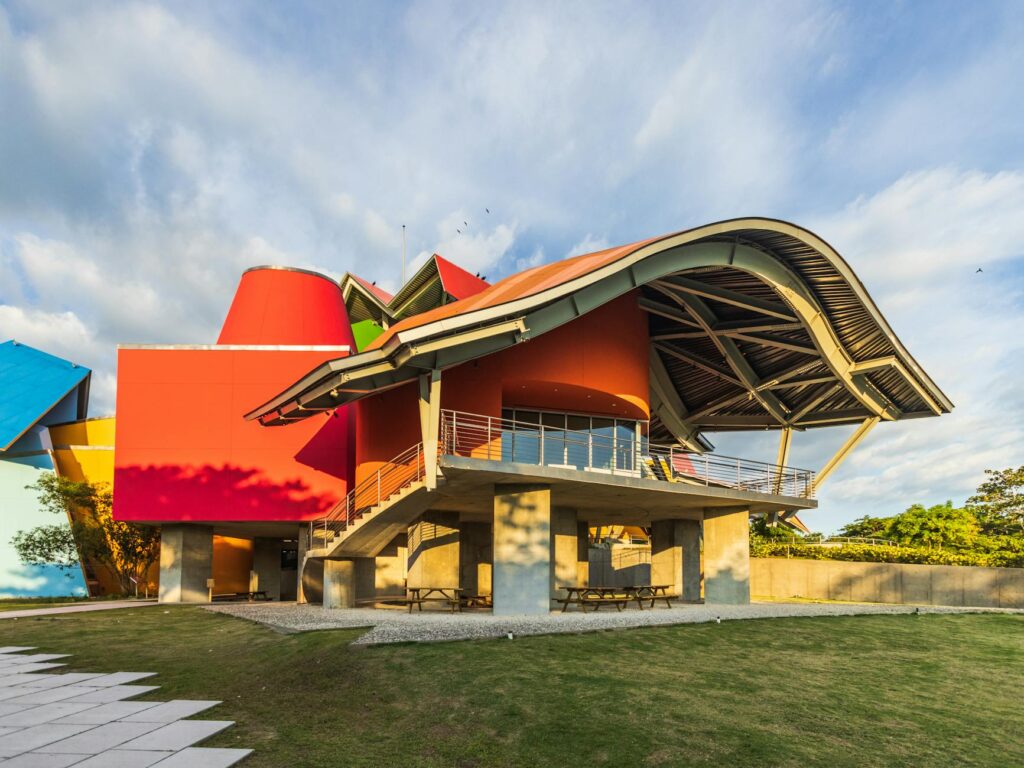Frank Gehry, a name synonymous with deconstructivism and titanium-clad buildings, has left an indelible mark on the architectural landscape. His designs are instantly recognizable, challenging conventional notions of form and function with their swirling, seemingly chaotic forms that belie an underlying precision and artistry.
Early Influences and Career Beginnings
Gehry’s early work was grounded in more traditional styles, but a pivotal moment came when he embraced deconstructivism. This philosophy, characterized by fragmentation and non-rectilinear shapes, became a cornerstone of his signature style. His early residential projects, while not yet fully expressing the deconstructivist vision, showed an innovative spirit and skillful use of materials. 
The Bilbao Guggenheim Museum: A Turning Point
The Guggenheim Museum Bilbao (1997) is arguably Gehry’s masterpiece and certainly his most famous work. This iconic building, clad in shimmering titanium, transformed Bilbao’s waterfront and catapulted Gehry to international stardom. Its organic curves and unexpected angles defied expectation, showcasing Gehry’s unique ability to blend artistry with engineering. Learn more about the design process. [IMAGE_2_HERE]
Deconstructivism and the Philosophy of Form
Gehry’s architecture is often described as deconstructivist, a movement that rejects traditional architectural principles in favor of fragmentation and non-rectilinear forms. His designs are not merely aesthetically pleasing; they are explorations of form, space, and the relationship between architecture and its surroundings. He often uses computer-aided design (CAD) to explore complex shapes and structural possibilities. [IMAGE_3_HERE]
Material Innovation and the Use of Titanium
Gehry’s innovative use of materials, particularly titanium, is a key element of his signature style. Titanium’s reflective qualities and ability to be shaped into complex forms perfectly complement his deconstructivist aesthetic. This material allows him to create structures that seem to shift and change depending on the light and the viewer’s perspective. Read about the challenges of working with titanium.
Beyond the Guggenheim: Other Notable Projects
While the Guggenheim Bilbao remains his most recognizable work, Gehry has designed numerous other significant buildings worldwide. These include the Walt Disney Concert Hall in Los Angeles, known for its dramatic stainless-steel sails; and the Vitra Design Museum in Weil am Rhein, Germany, a compelling example of his early deconstructivist experiments. [IMAGE_4_HERE]
The Gehry Legacy: Influence and Impact
Gehry’s influence on contemporary architecture is undeniable. His groundbreaking designs have pushed the boundaries of what’s possible, inspiring countless architects and shaping the aesthetic of cities around the globe. His work challenges viewers to reconsider their assumptions about form and function, demonstrating the power of architecture to stimulate and delight. Explore Gehry’s other designs.
Sustainability and the Future of Gehry’s Designs
While his early works focused primarily on aesthetics and innovative form, Gehry’s recent projects increasingly incorporate considerations of sustainability. This is an important step in balancing his creative vision with the urgent need to build environmentally responsible structures. [IMAGE_5_HERE]
Conclusion
Frank Gehry’s architectural legacy is one of innovation, creativity, and a fearless exploration of form. His iconic buildings stand as testaments to his artistic vision and his profound impact on the world of architecture. His ability to seamlessly blend art and engineering, combined with his use of unconventional materials, has created a body of work that is both visually stunning and intellectually stimulating.
Frequently Asked Questions
What is deconstructivism in architecture?Deconstructivism is an architectural philosophy that rejects traditional design principles, embracing fragmentation, non-rectilinear shapes, and a rejection of symmetry.
What materials does Gehry frequently use?Gehry is known for his innovative use of titanium, stainless steel, and other modern materials that allow for complex shapes and unique textural effects.
What is Gehry’s most famous building?While he has many notable projects, the Guggenheim Museum in Bilbao, Spain is widely considered his most famous and influential work.
How did Gehry’s style evolve?Gehry’s style evolved from more traditional forms to his signature deconstructivist style, marked by a greater embrace of non-rectilinear and fragmented shapes.
Is Frank Gehry still designing buildings?Yes, Frank Gehry is still actively involved in architectural design and continues to push the boundaries of his craft.

